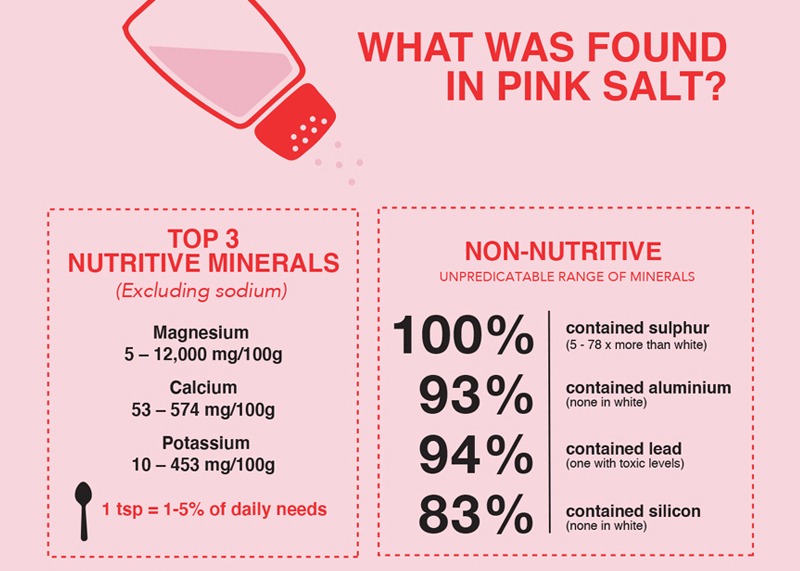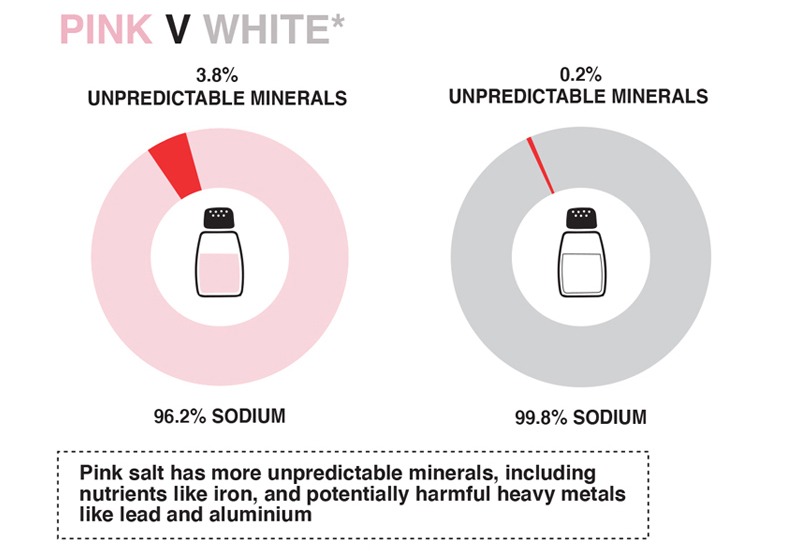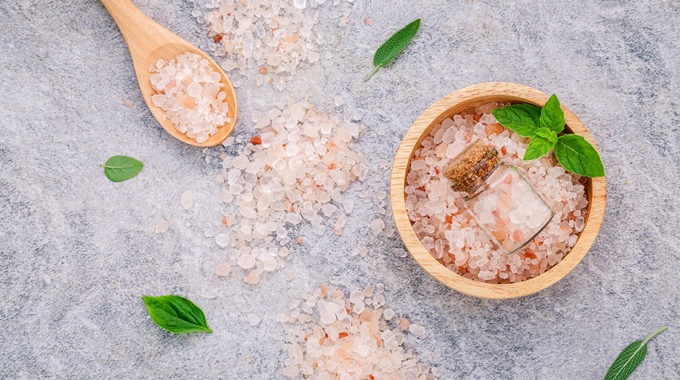Experts say it’s time to rethink pink salt
Do you think pink salt is better for you? A world-first study led by independent research company Nutrition Research Australia (NRAUS) has shown that pink salt contains low levels of essential nutrients… And a wide variety of harmful heavy metals.
Results garnered from testing 31 samples of pink salts available for purchase in Australia revealed they’re unpredictable and inconsistent in nature. Wide variations in the levels of nutrients found in the salt samples were significant. Iron levels ranged between 0 and 17mg per 100g and calcium levels ranged between 53mg and 574mg per 100g.
The study also found that pink salt samples with higher concentrations of essential nutrients also contained higher levels of heavy metals. More alarmingly, some pink salt samples contained aluminium and lead, with one sample exceeding national contaminant levels. Both of these heavy metals are harmful if consumed long-term or in excess.
However, all of the Australian-sourced pink salt samples showed lower levels of both essential nutrients and heavy metals.

No meaningful benefit
While the research shows pink salt might contain more nutrients than white table salt, you’d need to exceed your recommended sodium limit by over 500 percent before gaining any meaningful contribution to your diet from the other nutrients it contains.
These results have NRAUS calling on Australians to “rethink pink”. While pink salt contains more minerals than white table salt, the amounts are not meaningful. Also, limiting your overall salt intake will help you align with advice from the World Health Organisation.

Myth: debunked
NRAUS funded the research independently after its CEO, Dr Flavia Fayet-Moore, found that zero proof was available on pink salt’s nutrient composition. The research group felt Australians needed more evidence to make an informed choice.
“Our study shows that pink salt’s reputation for being ‘healthier’ has now been debunked,” Dr Fayet-Moore says. “The nutrient level is too low and variable for it to be a consistent source of nutrients. People would need to consume six teaspoons of pink salt for those nutrients to make a meaningful contribution to their diet. This far exceeds dietary guidelines and is detrimental to health.

A better way to season food
Nutrition scientist and dietitian Dr Joanna McMillan co-authored the study. She encourages Australians to consider alternatives when looking for flavour.
“There are healthier substitutes for salt that add flavour to your diet without the health risk,” she advises. “It is actually possible to retrain your tastebuds. So we challenge Australian households to try new things and add flavour to meals with natural flavour enhancers like umami foods, seaweed or fresh herbs and spices.”









